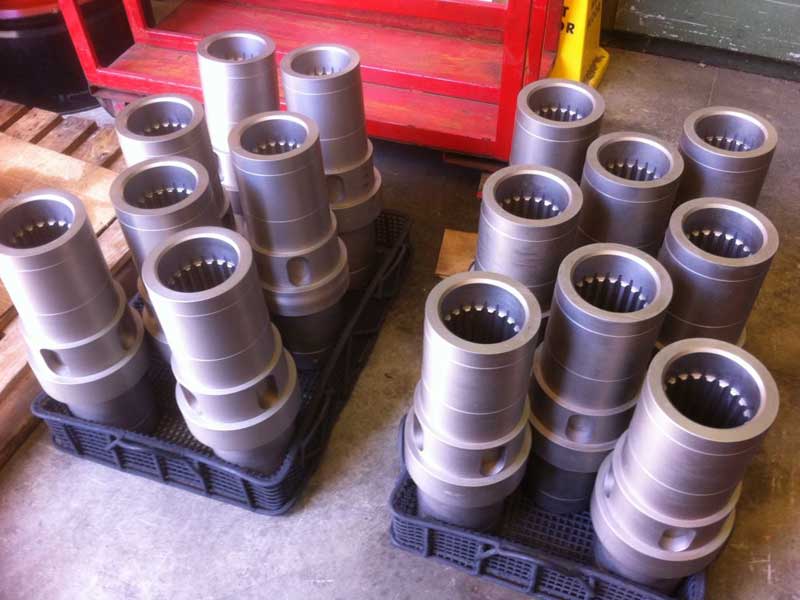
Optimise the surface hardness of your metal workpieces in Australia through the nitriding process. Know how controlled gas environments improve durability.
Nitriding process uses controlled gas environments to optimise surface hardness, ensuring durability and longevity for metal components. By precisely managing nitrogen flow, ammonia dissociation, and temperature, this technique forms a hard, wear-resistant surface layer without affecting the core properties of the metal.
The Working Principles of the Nitriding Process
The nitriding process is a surface-hardening technique used to enhance the wear resistance, fatigue strength, and corrosion resistance of steel and other metals. It involves diffusing nitrogen into the surface of a metal, typically steel, to form a hard nitride layer. This process is widely used in the manufacturing of tools, gears, crankshafts, and other high-stress components.
Some key steps of the nitriding process are as follows.
• Heating: The metal part is heated to a temperature typically between 500°C and 550°C in a controlled environment.
• Nitrogen Diffusion: Nitrogen is then introduced to the metal surface, usually in the form of ammonia gas (gas nitriding), plasma (ion nitriding), or salt baths.
• Surface Hardening: The nitrogen reacts with the metal to form nitrides, creating a hard, wear-resistant outer layer without changing the core properties of the metal.
• Cooling: After sufficient diffusion, the part is cooled slowly, preserving the hard surface layer.
Controlled Gas Environments in Nitriding
Controlled gas environments in nitriding optimise surface hardness by regulating the amount and type of nitrogen introduced to the metal surface. The precise control of these conditions ensures uniform nitrogen diffusion and the formation of hard nitride compounds, which significantly enhance the surface properties of the treated metal.
• Regulated Nitrogen Supply: In gas nitriding, ammonia is typically used as the nitrogen source. By controlling the flow rate and concentration of ammonia in the furnace, the amount of nitrogen available for diffusion is precisely regulated. This allows for consistent and predictable nitride formation, ensuring uniform surface hardness across the treated part.
• Temperature Control: A controlled gas environment helps to maintain optimal temperature levels, ensuring that nitrogen diffuses at the correct rate for the required hardness depth without affecting the core properties of the metal.
• Ammonia Dissociation Management: During gas nitriding, ammonia dissociates into nitrogen and hydrogen upon contact with the hot metal surface. Controlling the level of ammonia dissociation is crucial for achieving the right balance of nitrogen diffusion.
• Prevention of Compound Layer Overgrowth: While the compound layer (consisting of iron nitrides) is very hard, it can become too thick if the nitrogen concentration is too high, leading to surface brittleness and reduced fatigue resistance. By controlling the atmosphere in the furnace, the compound layer’s growth is managed, optimising surface hardness without sacrificing ductility or toughness.
• Uniform Nitride Layer Formation: A controlled gas environment ensures consistent nitrogen diffusion across the entire surface of the metal part. This results in a uniform nitride layer, which is crucial for components that undergo high stress and wear. With a carefully managed nitriding atmosphere, the hardness depth and uniformity are optimised, improving the overall durability and reliability of the treated component.
Nitriding by Alpha Detroit Heat Treatment
To optimise the surface hardness of your metal workpieces, let Alpha Detroit Heat Treatment carry out nitriding. We provide a wide range of services for all heat treatment needs in Australia and New Zealand. Our expertise allows us to suggest the most appropriate process for most heat treatment requirements in a wide range of applications.
Optimized by: Netwizard SEO
